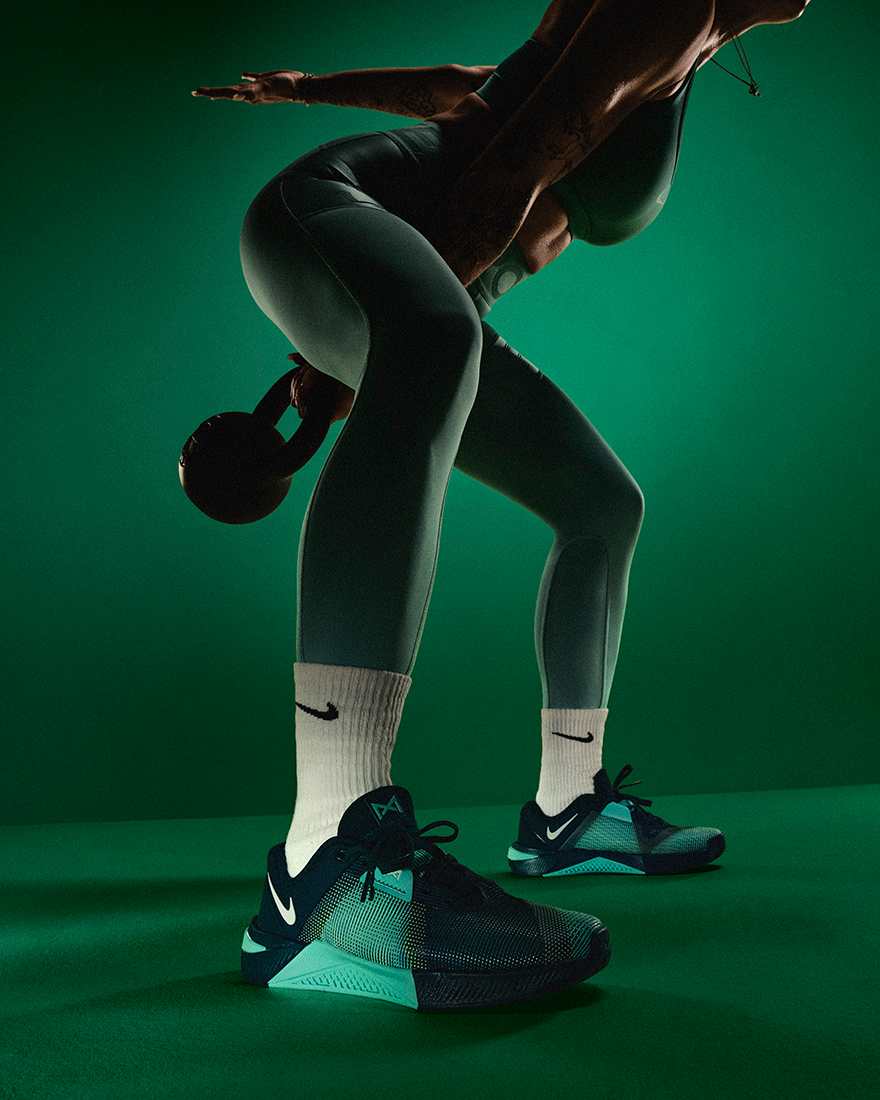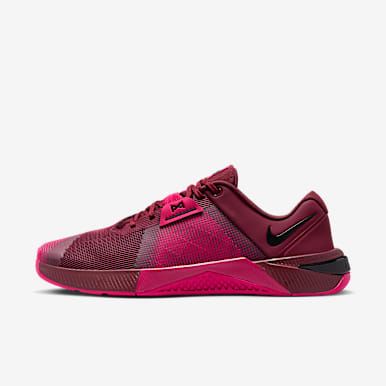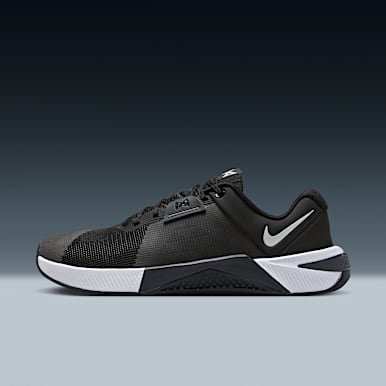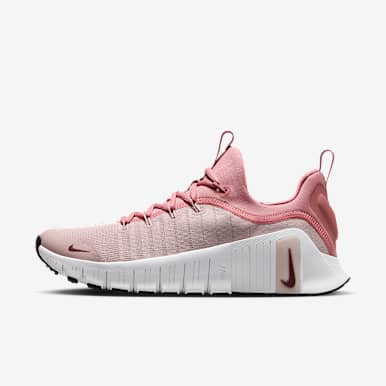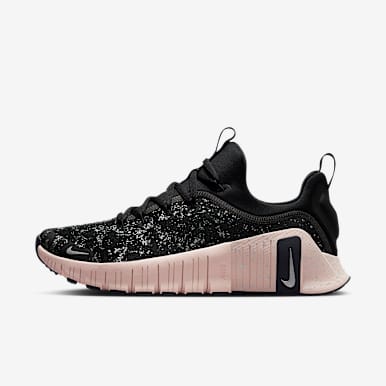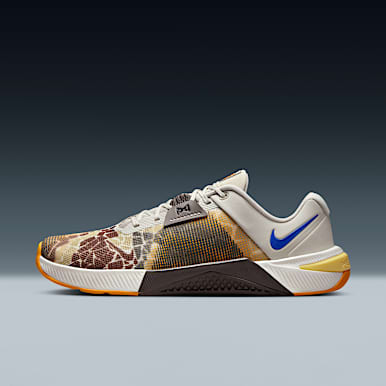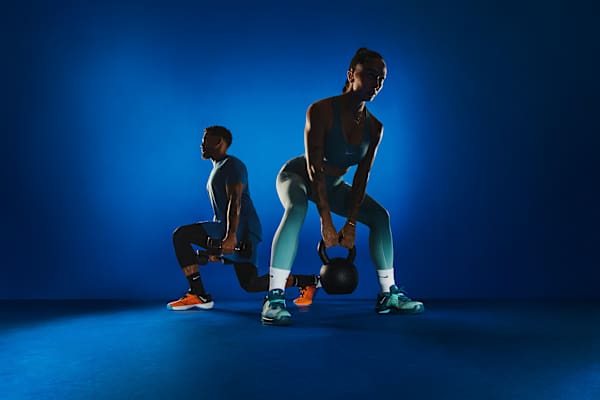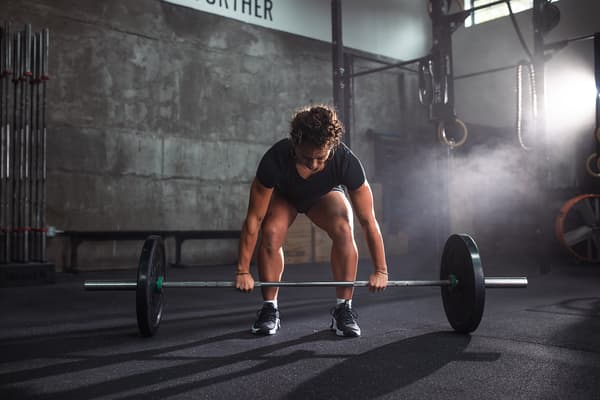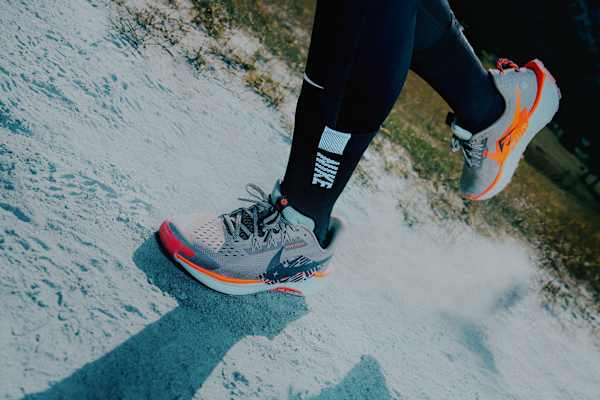The best Nike shoes for HIIT workouts
Buying guide
When switching up the intensity of your workouts, you need shoes that can keep up the pace.

Adding high-intensity interval training (HIIT) to your physical activity mix can be advantageous for your sleep, endurance levels and emotional well-being — and the shoes you wear can offer benefits, too. Most notable: better performance.
Because this type of workout is all about short bursts of intense activity combined with brief rest periods, the best shoes for HIIT are those designed to get the most out of those short bursts without holding you back.
"The thing that will stand out and will show up in all HIIT workouts, there's going to be some level of plyometric activity," Nike training coach Courtney Fearon says. "Your feet leaving and reconnecting with the floor is a big feature of HIIT training. So absorbing impact is critical.”
Bottom line, the best shoes for HIIT will be the ones that have a little bit of cushioning to absorb impact, but not so much that you sacrifice stability. Here are a few of the things you want your shoes to do in a HIIT workout, along with the best shoes by Nike for this kind of workout.
Best for High-Impact HIIT workouts
Box jumps, burpees, jump squats, jumping jacks and skipping rope intervals: No matter what direction you aim to bounce or how high you need to go, having a shoe that can support your landing is essential.
Nike's best shoes for HIIT workouts when you're focusing on plyometric movements are the Free Metcon 6. The Free Metcon features enough extra foam in the heel to help cushion your feet without compromising stability, plus a rounded big-toe side of the forefoot for quickness when toeing off during plyometric movements.
The Nike MC Trainer is another excellent, breathable option for high-impact HIIT workouts. Though not as cushioned as the Free Metcon 6, this shoe prioritises stability without the locked-in feeling of the Free Metcon.
Best for Weight-Based HIIT Workouts
Not all HIIT sessions involve jumping and sprinting. Some emphasise intense intervals of strength training, and for those you'll need ample stability and the feeling of being grounded while your heart rate climbs. These options by Nike prioritise stability and durability without sacrificing comfort.
The Nike Metcon 10, releasing in August 2025, is a product of extensive research and innovation that directly responds to the needs of gym-goers, especially those who rely on strength-training workouts. The shoe provides greater stability for heavy lifts, ample mobility and an innovative grip and a lace lockdown system to help mitigate worries over slipping in the shoes.
The Nike Romaleos are designed with strength and stability in mind. Heavy lifters can handle their most intense workouts in these trainers. Those who prefer to get their cardio under a heavy barbell can use Romaleo for their time-restricted sets.
Best for Hybrid HIIT Workouts
HIIT workouts that incorporate sprints in each round require a shoe that can help you blast off during the running intervals while staying stable during other exercises. Since it can interfere with your progress to stop and switch shoes mid-workout, you need a shoe that does both.
The Nike Free Metcon 6 is a great choice thanks to its versatility.
The Flex Experience Run is another all-around excellent option for HIIT due to its grooves in the outsole for optimal foot flexibility and a design that helps you move freely — making it the optimal choice if you're incorporating short bursts of running into your HIIT regimen.
In general, no matter the type of HIIT workout you take on, ensuring that your shoes can handle multiple types of movement and sudden changes in acceleration is key to getting the most out of your HIIT session.
"The shoe's ability to keep its shape and being consistent over time is pretty important with HIIT workouts", Fearon says.
Frequently Asked Questions
Why does HIIT require different shoes?
Each activity has a unique movement pattern that needs to be supported. That's why you'd wear different shoes for running a marathon than for playing basketball or powerlifting. Because HIIT tends to incorporate several kinds of movement within one session, your shoes should support them all and provide ample stability.
Can I wear running shoes for HIIT?
Running shoes are designed to provide traction and cushioning with forward movement. They also tend to have a higher heel-toe drop to minimise impact to the heel with repeated strides. If your HIIT workout uses multiple bouts of sprinting, running shoes would probably work well. But if you'll be doing cross-training with jumping, lateral movements and strength training, you'll need HIIT shoes built for agility with more grip and less spongey cushioning.
Words by Elizabeth Millard
